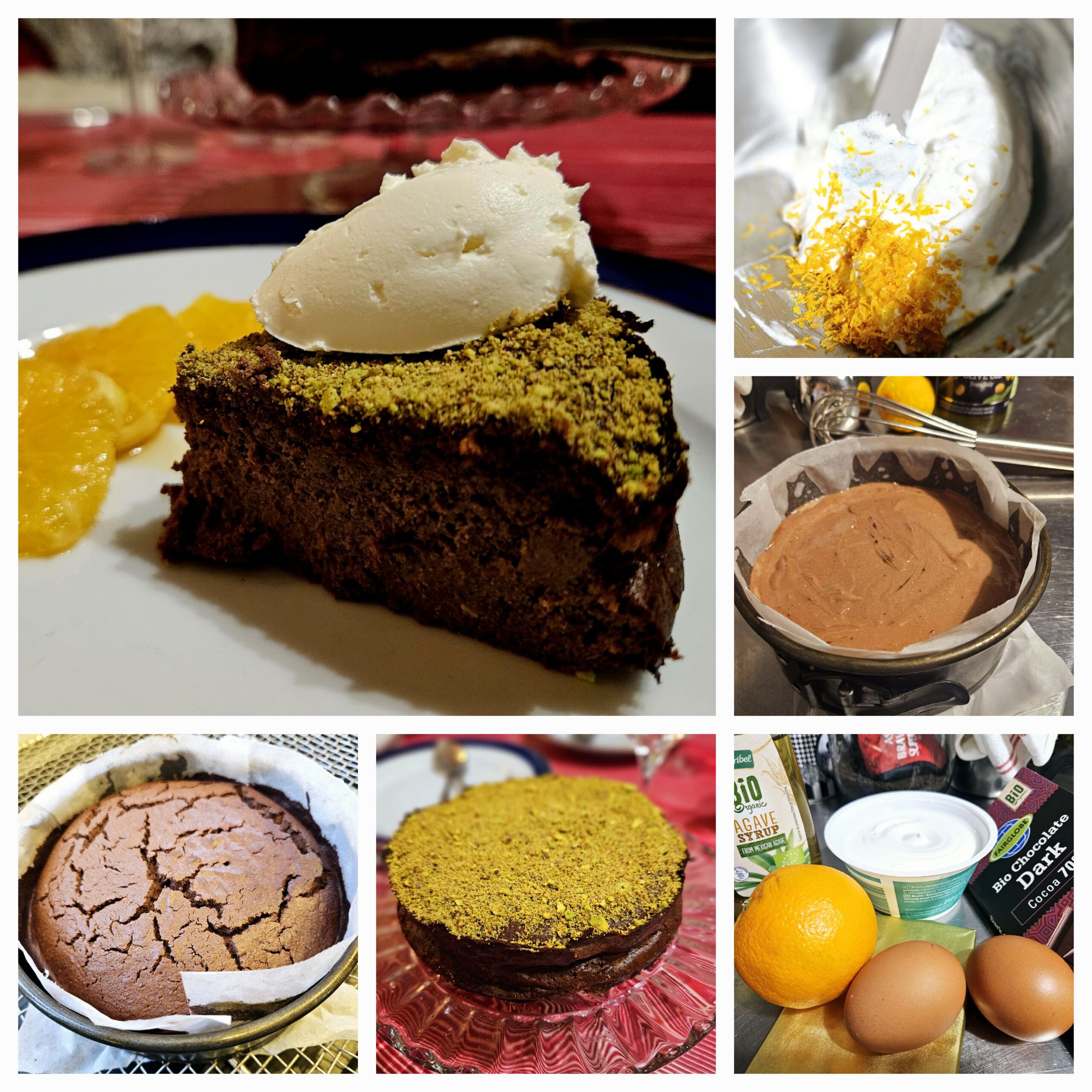This simple little cake is big on pleasure and has the texture of a French “moelleux au chocolat” but instead of butter ricotta creates the smoothness. I took my lead from an Italian nonna classic: “torta di ricotta e cioccolato senza farina” and tweaked it just a little.
The enjoyment starts with the childish pleasure of melting chocolate in a bowl over hot water, the conjuring up of the magic that is meringue, the pop of pungent orange oil on the grater, the crunch of the toasted pistachios and then the kitchen filled with the overpowering aroma of chocolate and orange, so strong that for a few moments the world is softer, brighter, happier.
This little cake is winter comfort eaten warm with vanilla custard, a pick-me-up breakfast with a cappuccino or an elegant dessert with some fruit and mascarpone. Choose your favourite and make this clever treat a firm (but squidgy) kitchen friend!
Continue reading “Sticky chocolate orange cake”



